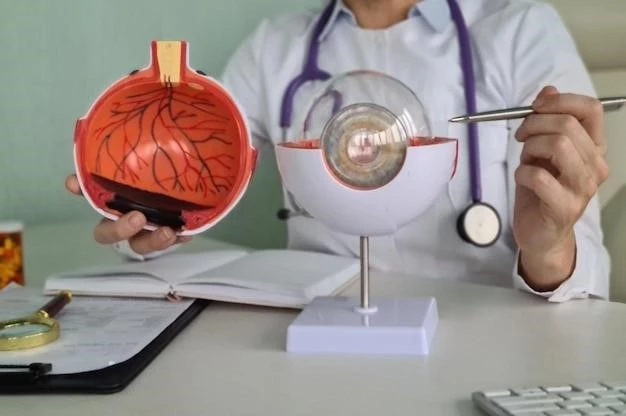Introduction to Vasovagal Syncope
Vasovagal syncope, also known as reflex syncope, is a common cause of fainting. Learn more about it.
Definition and Overview
Vasovagal syncope is a common form of fainting triggered by various stimuli like pain, emotional stress, or prolonged standing. It results from an overreaction of the body to specific triggers, leading to a temporary drop in heart rate and blood pressure. Understanding the causes, symptoms, and preventive measures is crucial.

Causes of Vasovagal Syncope
Vasovagal syncope, the most common cause of fainting, results from an overreaction to triggers. Learn more.
Vasovagal syncope can be triggered by emotional stress, heat exposure, physical pain, standing for prolonged periods, and other factors. Understanding these triggers is essential for managing the condition effectively.
Role of the Vagus Nerve
The vagus nerve plays a crucial role in the development of vasovagal syncope by causing heart rate decrease and vasodilation. Understanding its involvement is key to managing this condition effectively.
Triggers and Stimuli
Vasovagal syncope can be triggered by various factors such as emotional stress, pain, heat exposure, and standing for prolonged periods. Understanding these triggers is essential for managing the condition effectively.
Symptoms of vasovagal syncope may include dizziness, sweating, nausea, and fainting. Recognizing these signs is crucial for early intervention and management.
Diagnostic Procedures
Diagnosing vasovagal syncope typically involves a thorough medical history review, physical examination, and may include tests like tilt table testing, stress tests, and electrocardiograms. Seeking prompt medical evaluation is crucial for accurate diagnosis and appropriate management.
Common Signs to Look Out For
Symptoms of vasovagal syncope may include dizziness, sweating, nausea, and fainting. Recognizing these signs is crucial for prompt intervention.
Medical interventions for vasovagal syncope may include tilt training therapy, beta-blockers, or pacemaker implantation in severe cases. Consultation with a healthcare professional is essential to determine the most suitable treatment approach.
Lifestyle Modifications
Implementing lifestyle modifications like adequate hydration, avoiding triggers, and incorporating regular physical activity can help manage vasovagal syncope. Consult a healthcare provider for personalized recommendations.
Medical Interventions
Medical interventions for vasovagal syncope may include tilt training therapy, beta-blockers, or pacemaker implantation in severe cases. Consult a healthcare professional for personalized treatment.
Avoiding Triggers
To manage vasovagal syncope, it’s crucial to avoid common triggers like emotional stress, heat exposure, prolonged standing, and dehydration. Implementing strategies to minimize exposure to these triggers can help prevent syncope episodes.
Staying well-hydrated and maintaining regular physical activity can help manage vasovagal syncope by supporting cardiovascular health and improving blood flow regulation. Incorporating these habits into your daily routine can contribute to symptom prevention.
Hydration and Physical Activity
Maintaining adequate hydration levels and engaging in regular physical activity can help manage vasovagal syncope by promoting cardiovascular health and blood flow regulation. Incorporate these habits into your routine to reduce the risk of syncope episodes.
During a vasovagal syncope episode, immediate actions like lying down, lifting the legs, and muscle tensing exercises can help restore blood flow and prevent fainting. Learn these techniques to manage syncope episodes effectively.
Post-Episode Care
After experiencing vasovagal syncope, it’s essential to lie down, elevate the legs, and stay hydrated to aid in recovery. Knowing how to care for yourself post-episode can help prevent further incidents and promote well-being.
Immediate Response Techniques
When experiencing a vasovagal syncope episode, lying down, raising the legs, and muscle tensing exercises can help restore blood flow and prevent fainting. Learn these techniques for effective episode management.
Vasovagal Syncope in Young Patients
Vasovagal syncope is most commonly seen in young patients, often between 10 and 30 years of age. Understanding the age-related incidence and triggers of syncope is essential for proper management in younger individuals.
Vasovagal syncope in older adults presents unique challenges due to age-related changes in cardiovascular function. Understanding the differences in presentation and management strategies for older individuals is crucial for effective care.
Vasovagal Syncope in Older Adults
Older adults may experience vasovagal syncope differently due to age-related changes in cardiovascular function. Understanding these nuances is crucial for appropriate care in this age group.
Seek medical help if you experience frequent or prolonged episodes of vasovagal syncope to rule out underlying serious conditions or if you have concerning symptoms like chest pain or shortness of breath alongside fainting.
Understanding the Risk Factors
Risk factors for vasovagal syncope include dehydration, emotional stress, heat exposure, and certain medical conditions. Recognizing and addressing these risk factors is essential for preventing syncope episodes and maintaining overall well-being.
When to Seek Medical Attention
If you experience recurrent vasovagal syncope, especially if episodes are prolonged or accompanied by concerning symptoms, seeking medical attention is crucial to rule out underlying serious conditions and ensure appropriate care.

Managing Anxiety and Stress
Managing anxiety and stress is essential in addressing vasovagal syncope triggers. Techniques such as deep breathing, meditation, and stress-reducing activities can be beneficial in minimizing episodes. Seeking support from mental health professionals may also be helpful in managing emotional aspects related to vasovagal syncope.
Establishing support systems, such as therapy or support groups, can help individuals cope with the psychological and emotional aspects of vasovagal syncope. Seeking emotional support and guidance can aid in managing stress and anxiety related to the condition.
Support Systems for Coping
Establishing support systems such as therapy or support groups can help individuals cope with the psychological and emotional aspects of vasovagal syncope. Seeking emotional support and guidance is key to managing stress and anxiety related to the condition.
Ongoing Studies and Innovations
Continued research on vasovagal syncope aims to explore new treatment options and enhance diagnostic procedures. Innovations in understanding the condition may lead to improved management strategies and better outcomes for individuals affected by vasovagal syncope.
Potential Advances in Treatment
Advances in the treatment of vasovagal syncope are being explored through ongoing research studies focusing on innovative therapies and diagnostic techniques. These advancements aim to enhance patient outcomes and quality of life by providing more effective and personalized treatment options tailored to individual needs.
